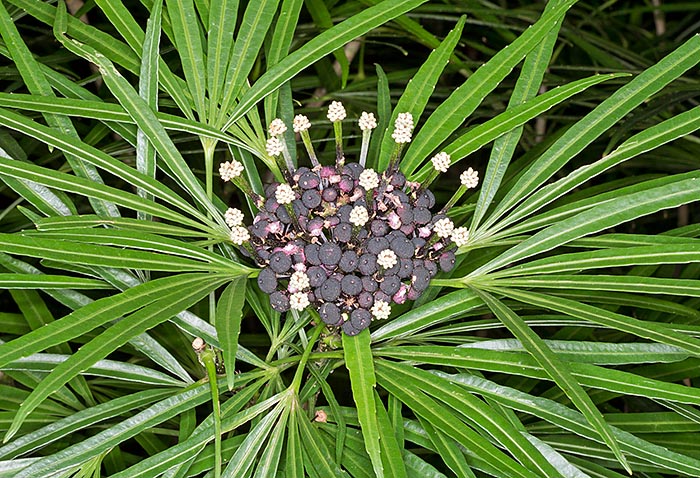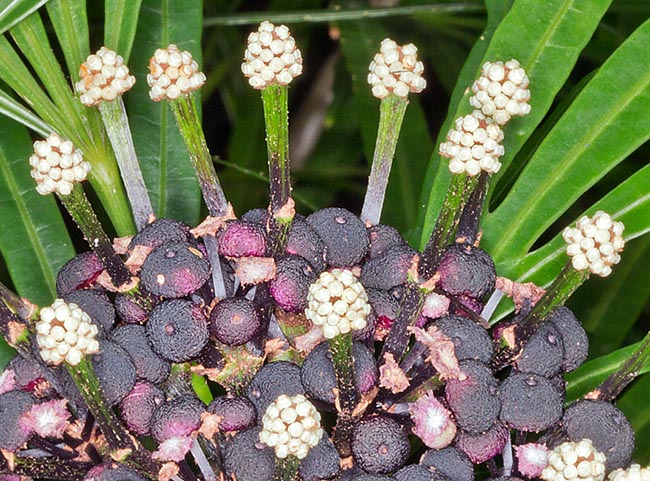Family : Araliaceae

Text © Pietro Puccio

English translation by Mario Beltramini

Osmoxylon lineare is native to Philippines where lives as underwood in humid forests © Giuseppe Mazza
The name of the genus is the combination of the Greek substantives “ὀσμή” (osmé) = scent and “ξύλον” (xylon) = wood; the name of the species is the Latin adjective “linearis” = linear, with reference to the linear lobes of the leaves.
Common names: green aralia, miagos bush (English).
The Osmoxylon lineare (Merr.) Philipson (1976) is a 1,5-3 m tall, erect, compact evergreen shrub, with pale grey stem.
The leaves, on a 4-6 cm long petiole, grouped at the apex of the branches, are palmate, coriaceous, of glossy intense green colour, divided almost up to the base in 4-7 lanceolate linear lobes, 15-20 cm long and 1-1,5 cm broad, with pointed apex and margins with spaced teeth. Terminal inflorescences in compound umbels with about 10 primary axes, 2-3 cm long, ending each one in three secondary axes, the central one, 0,5 cm long, ending in a spherical umbel of sterile flowers (false fruits), and the two lateral, 3-3,5 cm long, ending in a capitulum of about 1 cm of diameter formed by up to 20 hermaphroditic sessile flowers of white cream colour.

Close-up of the inflorescence complex structure with false fruits and terminal capitula © Giuseppe Mazza
Species rare in cultivation, very decorative due to the elegant foliage and undemanding of cares, cultivable in the tropical and subtropical climate regions where temperatures close to the 0 °C are a short-lasting exception.
Utilizable as soil cover or for edges, requires well drained rich soils, slightly acidic or neutral, maintained preferably humid, even if, well rooted, resists to short drought periods; it adapts to an ample variety of light, from the full sun, if the humidity is high, to the shade.
Slow-growing, it well adapts to the cultivate in pot for the decoration of even little luminous ambients, with lowest temperatures not under the 15 °C, utilizing a substratum rich of organic substance with addition of coarse sand or agri-perlite for a 30% to improve the drainage, with regular watering, but allowing the loam to partially dry up before watering again. A particularly decorative variegated form does exist.
Synonyms: Boerlagiodendron lineare Merr. (1908).
→ To appreciate the biodiversity within the ARALIACEAE family please click here.
